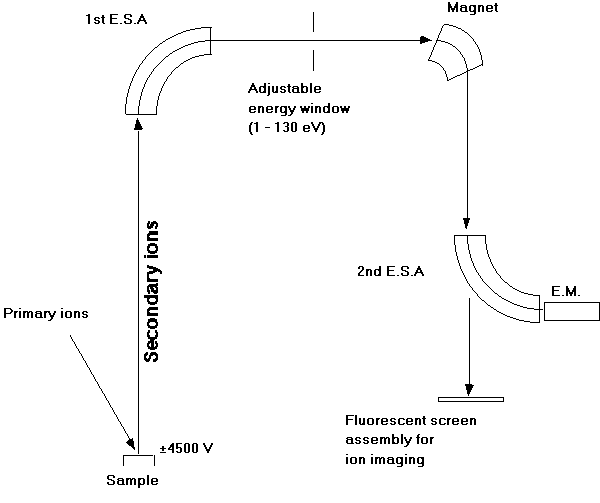|
At Arizona State University, we use a Cameca brand SIMS. In this design (see Fig. below), a beam of primary ions at an impact energy of ~3-20 keV is focused to a spot and directed at a sample. Each incoming ion leads to multiple collisions with the atoms in the near-surface environment (known as a collision cascade), and from 1 to ~12 atoms are ejected, or sputtered, from the top few monolayers of the sample. A small fraction (<10%) of these sputtered atoms are ionized in the process (see Williams, 1985a; 1992 for reviews). After selection for energy (by the first electrostatic analyzer) and mass (in the magnetic sector), the secondary ions are steered into the counting system with a second electrostatic analyzer (ESA) which provides improved abundance sensitivity. The ions are counted using either an electron multiplier or a faraday cup. Ion images can be directly obtained on a fluorescent screen if the second ESA is grounded. For more general information on the design and applications of SIMS see Benninghoven et al. (1987). The operator has the flexibility to vary several parts of the instrument: (1) the polarity and species of the primary ion beam (O-, O2+, Ar+, Cs+ are often used), (2) the impact energy, current and diameter of the primary beam, (3) the polarity of the secondary ion beam, and (4) the initial kinetic energies of the secondary ions detected.
|
